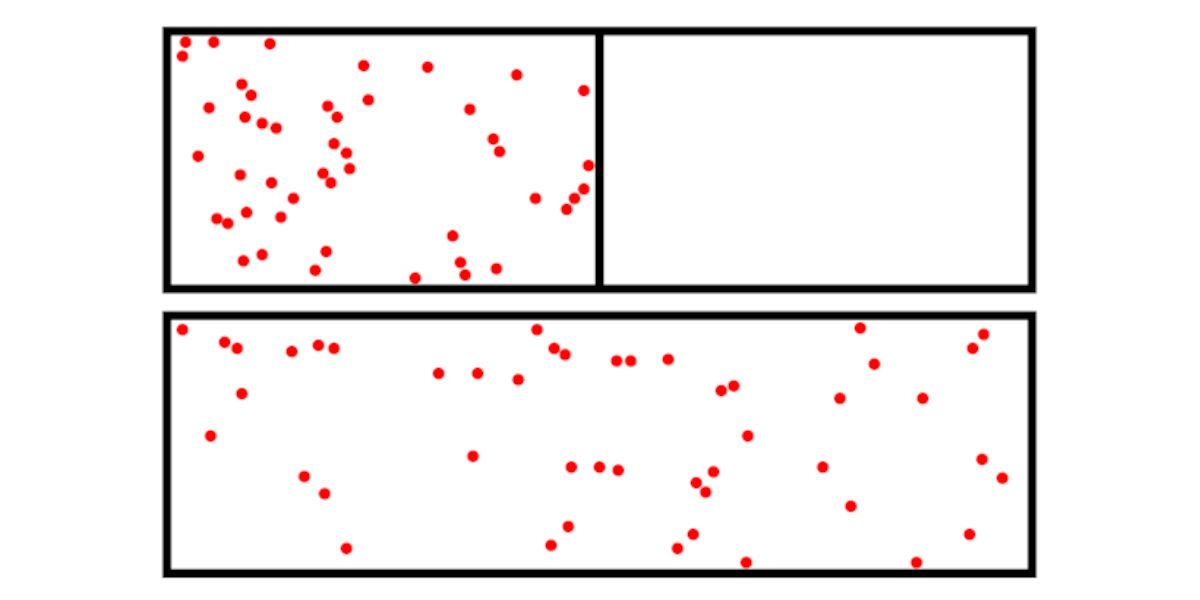In today's scientific world, it's almost impossible to have a discussion without some mention of the laws of thermodynamics. These laws not only govern the basic principles of energy transfer but also have profound implications on our understanding of the universe and its workings. Among these, understanding the Second Law of Thermodynamics is of primary concern. This law, with its many repercussions, applications and controversies, forms the cornerstone of our comprehension of energy systems.
Understanding the Second Law of Thermodynamics
Before plunging into the intricate details of the Second Law, it's essential to understand its fundamental proposition. The Second Law of Thermodynamics states that in any closed system, the overall entropy, or disorder, will either remain constant or increase over time. This means that energy systems naturally progress towards a state of maximum disorder.
But why is this significant? The law is a profound statement about the nature of energy and its propensity to spread or disperse if not restrained. It talks about the irreversible nature of energy flow and has implications in understanding everything from the simple operations of a refrigerator to the complex curve of the universe's life.
Applications of Second Law of Thermodynamics
Where the First Law of Thermodynamics establishes the conservation of energy, the Second Law dictates how this energy transitions or flows from one form to another. The implications and applications of the Second Law of Thermodynamics extend to all physical and natural phenomena.
In mechanical systems, the Second Law aids in determining the efficiency of engines and heat pumps. While in biological systems, it throws light on how organisms use energy and drive their life processes. In cosmological terms, the law provides insight into the nature and fate of the universe. It is the Second Law that explains why time has a certain direction - why we remember the past but not the future.
Can the Second Law of Thermodynamics Be Broken?
While it seems overwhelmingly solid, the Second Law of Thermodynamics is not without its share of controversies and ongoing debates. The primary question that incites such debates: Can the Second Law of Thermodynamics be broken? The direct answer seems to be no, as the law is based on statistical probabilities, with a gigantic number of microstates leading to macroscopic disorder. However, on the microscopic scale, there are certainly cases where entropy reduction occurs; thus leading to a challenging discussion and analytical argument.
Applications of the Second Law of Thermodynamics
The Second Law of Thermodynamics, with its concepts of entropy, provides us with an understanding of energy and how it influences various natural and artificial systems. It is therefore relevant in several fields, from physics to chemistry, biology to engineering, and even economics.
In mechanical engineering, the Second Law is used in the analysis and improvement of energy efficiency in machines. This includes internal combustion engines, steam turbines, refrigerators, and air-conditioning systems. It helps in identifying where energy is lost as heat and how to limit such losses.
Within the field of biology, this law helps in explaining the natural biological processes such as photosynthesis and cellular respiration. It demonstrates how living organisms utilize energy, transform it, and dissipate it as heat.
The Second Law is also an essential concept in materials science. It is used to understand phase transitions, such as the melting of ice into water and the evaporation of water into steam. The Second Law aids in predicting the conditions under which these transformations can occur.
Moreover, a fascinating application of the Second Law of Thermodynamics can be found in the field of data communication and computation. The law of entropy plays a vital role in information theory, helping in quantifying the maximum amount of data that can be theoretically compressed without loss.
Limitations and Controversies
The Second Law of Thermodynamics, while powerful, is not without limitations and controversies. One of the main criticisms is that it is based on a statistical understanding of physical systems. It means that it only deals with the probabilities of a system's states rather than guaranteeing certainty.
Another critical critique of the Second Law concerns the concept of 'entropy.' Entropy is often described as a measure of disorder, but this interpretation can lead to misunderstandings. For instance, while high entropy states often correspond to disordered states, this is not always the case. The concept of entropy is much more subtle, being determined by the microstates of a system. Therefore, it's crucial to approach it from a statistical and probabilistic perspective.
Conclusions
The Second Law of Thermodynamics is a pillar of modern science, impacting fields as varied as engineering, molecular biology, and information theory. Despite its complexities and the controversies surrounding its interpretations, its importance in explaining the natural world remains undisputed. By furthering our understanding of the Second Law, we can unveil more secrets about the universe, leading to advancements in technology and a deeper comprehension of our existence.




